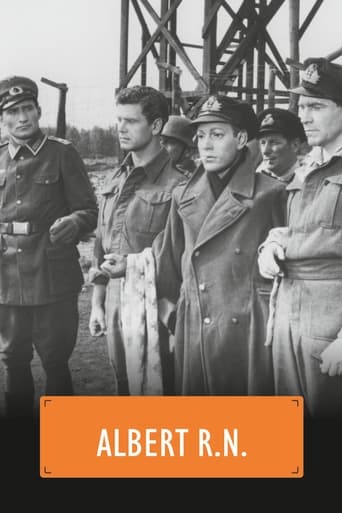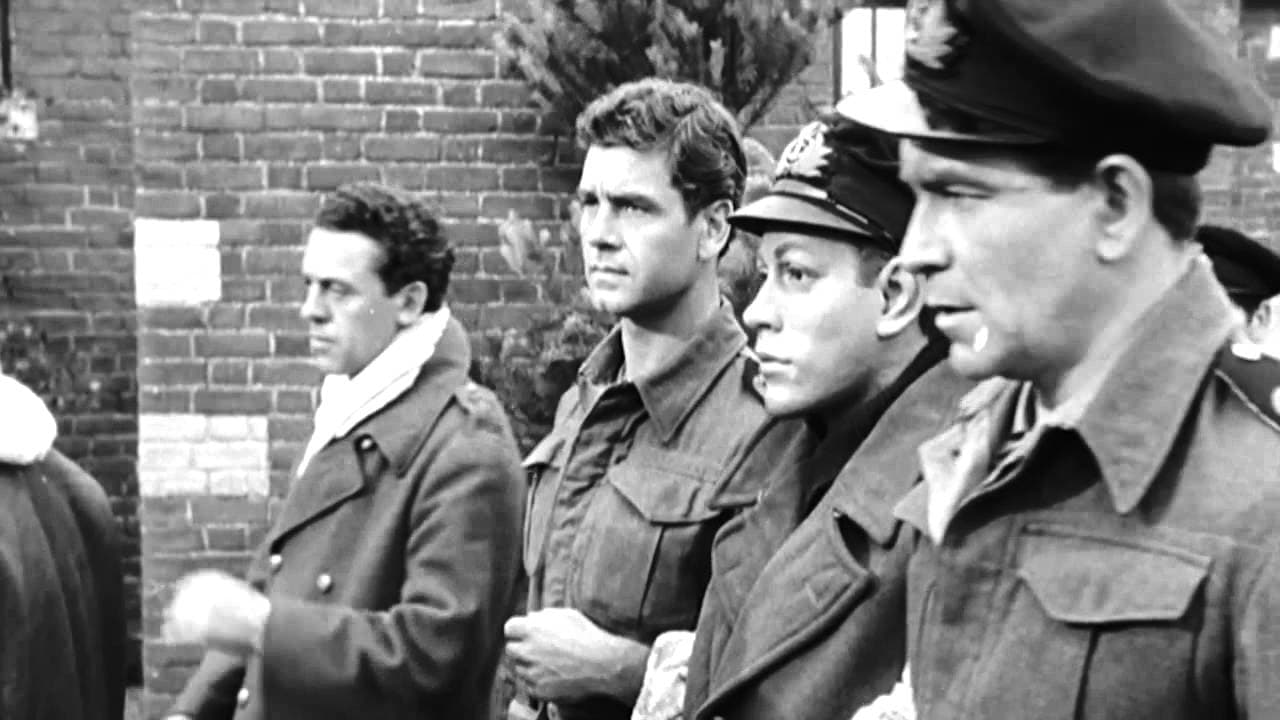SimonJack
"Albert, R.N.," aka, "Break to Freedom," is a very good British POW film set during World War II. The film opens with a prologue, "The events concerning Albert are based on fact, and took place in the prison camp, Marlag "O," for Naval Officers in North West Germany, during the spring of 1944." Indeed, two former POWs wrote a play about this POW camp and events, and the movie screenplay was based on that. The term, marlag, is an abbreviation of Marinelager (navy camp), and these were prison camps for sailors and naval officers. The "O" designation was for officers. The prisoners at this camp were mostly British naval officers, with some American and other U.K. naval officers. Marlag "O" was located near Hamburg, Germany, and in a couple of scenes of night Allied bombing, the POWs refer to Hamburg getting hit again. The Milag (internment) camps held the many Merchant Navy and Merchant Marine seamen. They were divided also between officers and men. Most of the 5,000 Allied merchant seamen rescued and captured by the Germans were held in Milag North. American shipment of war materials, supplies, and combat forces was all done by the Merchant Marine. The Marlag and Milag camps were about 1,000 feet apart, and between them was a large block of showers that was used by both camps.The characters in this story and film are fictitious, though they resemble some of the men who were at Marlag O. Anthony Steel plays Geoff Ainsworth, the artist who designed the mannequin face of Albert. He is patterned after John Worsley a war artist. Two British officers helped with Albert. One made the body and the other made it so Albert's eyes would blink and move. The real story came out different than this film shows. The first escapee (Lt. William Mewes) wasn't killed. He was recaptured and returned to Marlag. The second escapee was captured in the shower building, as shown in this film. There was no third attempt because the Germans discovered Albert and destroyed the mannequin.After the war, artist Worsley made another Albert for use in making this film. He also made another for an exhibition of his work, and it later went to the Royal Naval Museum at Portsmouth. In the movie, Lt. Fred Erickson (played by Paul Carpenter) says, "Nice work Geoff. After the war, you come to Hollywood. We've got just the job for you – making stars look like people." The film itself comes off a little stagy at times, but the compelling story keeps that from detracting from the film. This is a good historical movie because it shows a POW camp specifically for naval officers. The sea-going prisoners were treated quite differently than were the Army prisoners in the many regular POW camps.
trimmerb1234
There were quite a few British POW films in the '50's, some better than others. For some reason, the real ingenuity of escape attempts were glossed over, what so occupied the POWs attentions and on which depended their happiness and their lives: how uniforms, documents, stamps, photographs, tools etc could be made by with apparently none of what was necessary to make them. The films were thus human stories which though lacked much of what had been so crucial to the men involved. Here though the heart of the film is Albert RN - the life-like full size dummy used to take the place of a prisoner - and the virtuoso performances of its summoning out of the air in seconds, and its disassembly and disappearance again in seconds. Also along with the dummy itself, the way it was deployed, the plans for avoiding discovery and the on the spot quick thinking needed if the unexpected happened (when perhaps a dozen POW had to wordlessly devise and implement a plan in the presence of the German guards). And Albert R.N. was not just brought out to deceive the guards on the day of the escape but every day for a week to delay discovery of the escaped prisoner. The other parts of the film are not quite up to par. Jack Warner did not convince physically as a serving naval officer, Anton Differing did his nasty Nazi once again (though who did it better?) but the marvel of Albert RN the dummy raised the bar and shone a light on the ingenuity, daring and skill of those who devised, built and operated him.
GUENOT PHILIPPE
British film movie industry had a speciality, during the fifties and also a bit in the sixties, that was war films, especially POW features. Films about escapes from POW camps. Americans made the two GREAT ESCAPE and STALAG 17. But the British made more than that. I saw many POW movies from UK. I don't remember them all, except A TOWN LIKE ALICE and KING RAT. But, I repeat, there were many many more. Do not forget that the British soldiers, during WW2, were, for most of them, prisoners by the Nazis. So...I won't add much to the previous comment, except that the terrific Anton Diffring character is named Schlutz. That sounds familiar to me. Maybe I am wrong, but I think of the famous TV show STALAG 13 - aka PAPA SHULTZ in french title - that spoke about POW guys, in a comedy TV series. The warden of the POW camp also named Schultz. But this character had nothing to do with the evil one played here by the magnificent villain Diffring.
gordonl56
One of the better of the rash of pow camp films that came out of the UK in the late 1950's. The film is set in a Nazi pow camp where a group of Royal Navy prisoners come up with a novel means of escape. They produce a life-like dummy that breaks down into small pieces. Several of the men hide the pieces under their coats when they are marched outside the wire for the weekly shower. Once inside the shower room they put the dummy back together. While one man stays behind the rest march back to camp carrying the dummy between them. The guards take a head count which of course matches the number of prisoners who left earlier. The gag works and the Germans are fooled. Only problem is the escapee is caught and shot. They plan to keep pulling the same trick again till one of them makes good his escape. Director Gilbert keeps this one moving right along while getting the best out of the cast and crew. The prisoners include Anthony Steel, Jack Warner, Robert Beatty and Paul Carpenter. The best role in the film goes to Anton Diffring who does his best Nazi SS officer bit. Diffring made a career out of playing nasty German officers. Well done!(b/w)


 AD
AD



